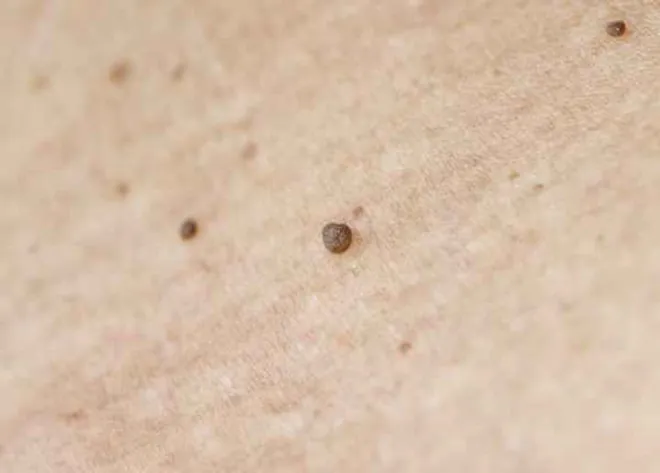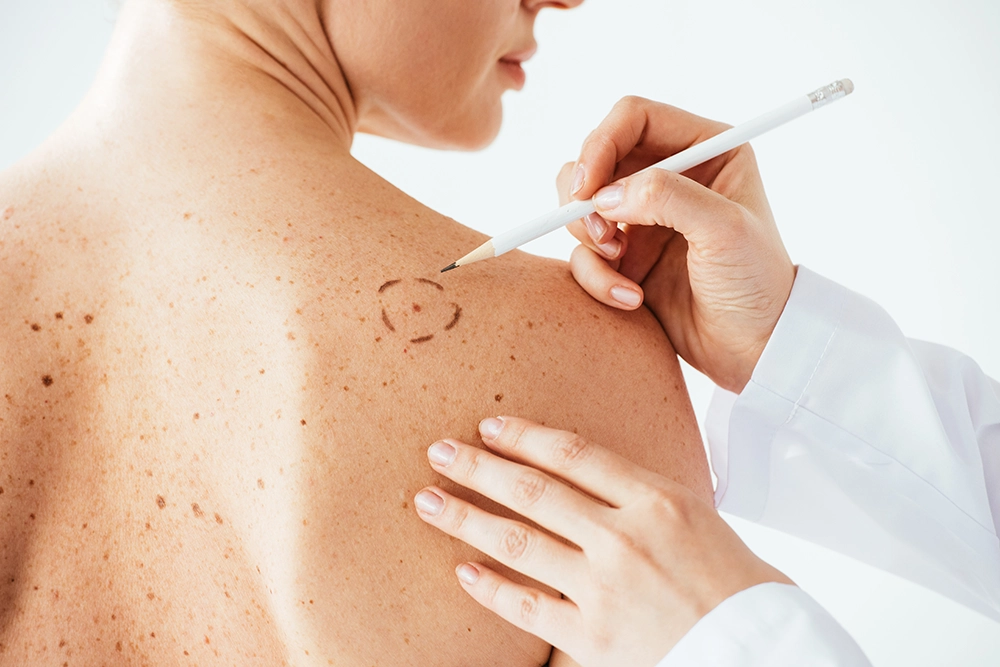Radiance Skin Clinic
Skin tags removal
Skin tags are soft, noncancerous growths that usually form within the skin folds of the neck, armpits, breasts, groin area, and eyelids. These growths are loose collagen fibers that become lodged inside thicker areas of the skin.
Home » By service » Skin tags removal

What cause skin tags?
Skin tags are soft, noncancerous growths that usually form within the skin folds of the neck, armpits, breasts, groin area, and eyelids. These growths are loose collagen fibers that become lodged inside thicker areas of the skin.
Skin tags are also extremely common, affecting almost half of the population. They’re also more common among older adults, people with overweight, and people with diabetes.
Skin tags are also a common side effect of pregnancy. This may be due to pregnancy hormones and weight gain. In rare cases, multiple skin tags can be a sign of a hormone imbalance or an endocrine problem.
There may be a genetic connection as well. It isn’t unusual for multiple family members to have them. But skin tags are not contagious.
These skin lesions are usually harmless, but they can be painful when snagged by jewelry or clothing. If these growths are bothersome, relief is available.
How to remove skin tags?
The Carbon Dioxide (CO2) laser ablates the surface of the lesion skin tags to leave it flush with the skin’s surface. The main advantage of laser skin tags removal is the outstanding cosmetic outcome and quick healing time. Compared to excision (cutting out) which leaves an obvious scar, most patients find the scar is barely noticeable after CO2 laser treatment.
The treatment area may be numbed prior with a topical numbing cream and/or injectable lidocaine
Can skin tags become malignant?
Other skin conditions like warts and moles can resemble skin tags. Since some moles may be cancerous, it’s best to have your skin tags examined by an experienced Dermatologist.
Most skin tags are noncancerous growths, but if yours is atypical or looks suspicious, our Dermatologist at Radiance Skin Clinic may perform a biopsy as a precaution.

Removal aftercare tips
Radiance Skin Clinic
Testimonials

Fantastic experience having a mole removed at Radiance!! Completely painless and done in 5 minutes. The doctor and staff are so friendly and welcoming. Highly recommend 😊
Ruby

Dr. Kitisak is very good and professional. I’m very satisfied with the result of getting treatment here. My face is beautiful and glowing. Highly recommended. Nice, clean, and convenient location of the clinic.
ohdelanna

Very good clinic. My husband and I only go to Dr. Kittisak. He is an excellent specialist and quickly helps solve any problem. The prices at the clinic are also very reasonable and low compared to other clinics.
Emilia Krutilina

I have a very sensitive skin condition, been trying numbers of clinic and treatments. Finally I found Radiance, hit the point, fix the issue. Now I’m ready to do selfie without application.
Jakapong Prachuabmoh
Make an appointment
Lorem Ipsum is simply dummy text of the printing and typesetting industry. Lorem Ipsum has been the industry’s standard dummy




